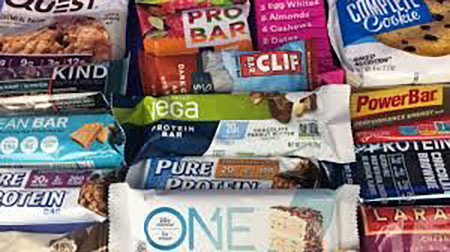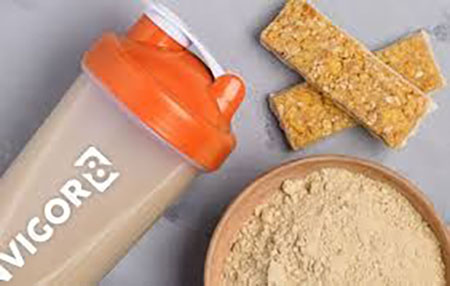
For many college students balancing classes, work, and workouts, protein bars and powders seem like an easy nutritional fix. They’re convenient, quick, and often marketed as the “healthy” choice–something you can grab on your way to the Barnes Center or toss in your bag between lectures. But when you take a closer look at the nutrition labels, the reality is much more complicated.
As a nutrition student and someone who has walked past the protein bar displays at almost every campus store, I’ve noticed how much we, as students, rely on these products and often without fully understanding what’s in them.
One of the biggest misconceptions I’ve noticed is that people primarily look at the sugar content when deciding if a protein bar is “healthy.” While monitoring added sugar is important, it’s not the only thing that matters. Many popular protein bars–even those labeled “low sugar”–contain surprisingly high amounts of saturated fats. Excess saturated fat intake has long been associated with increased cholesterol levels and a higher risk of cardiovascular disease. For students reaching for these bars thinking they’re doing something good for their bodies, that can be a hidden nutritional pitfall.
A quick walk through a convenience store will reveal bars that contain 4-6 grams of saturated fat–almost one third of the recommended daily limit in just one snack. It’s easy to see how this can add up, especially if you’re eating them regularly.
The Right Whey?

Similarly, protein powders have become a staple for many students, particularly those who frequent the Barnes Center gym. It’s common to see students adding a scoop of protein powder to their smoothies at Otto’s Juicebox, or shaking up a protein drink immediately after a workout.
However, it’s important to recognize that most protein powders, including whey, are highly processed products. Whey protein is a byproduct of cheese production and undergoes multiple industrial steps–filtration, drying, and the addition of flavorings, emulsifiers, and stabilizers–to create the powdered product you see on store shelves. These powders are categorized as “ultra-processed” foods, meaning they contain ingredients that have been significantly altered from their original form.
While whey protein is a complete protein source and rich in essential amino acids, it isn’t always the best option. Because it is derived from milk, students with lactose intolerance or milk allergies may experience digestive discomfort or adverse reactions. Even for those without sensitivities, the ultra-processed nature of these powders often means they are paired with added sugars, artificial sweeteners, and thickeners–ingredients that may not support long-term health when consumed in excess.
Beyond the nutritional profile, relying heavily on these processed supplements can distance students from whole food protein sources, which offer not only protein but also fiber, vitamins, and minerals that work synergistically to support health.
High Sodium, Low Fiber

Another sneaky culprit? Sodium. Some protein bars and shakes contain 200–300 mg of sodium per serving, which can quietly build up throughout the day, especially when combined with dining hall meals or packaged snacks.
High sodium intake is associated with elevated blood pressure and increased cardiovascular risk, especially in individuals sensitive to salt. While sodium isn’t inherently bad (our bodies need it!), many students don’t realize just how much they’re consuming from seemingly “healthy” snacks. When choosing bars or powders, aim for options that have less than 200 mg of sodium per serving, particularly if you’re consuming more than one a day.
Astonishingly, many protein bars are low in fiber, which is a key nutrient for digestive health and satiety. Choosing a bar with at least three grams of fiber can help keep you fuller for longer, regulate digestion, and even maintain stable blood sugar levels. Fiber is especially important if you’re eating a protein bar as a meal replacement or on-the-go snack between classes.
In a campus environment where schedules are packed and dining options can sometimes feel limited, it’s easy to default to prepackaged, processed products without much thought. But it’s important to remember that nutrition is obviously nuanced. Choosing a protein bar or powder isn’t just about how much protein it has, it’s about the whole nutritional profile and how it fits into your overall dietary needs.
As nutrition students at Falk College, we are encouraged to think critically about the foods we consume and the information we’re given. That same mindset is something all students can benefit from when reaching for a quick source of protein. Taking an extra moment to read a label can help you make better choices–choices that support not just your workouts, but your long-term health.
Sudiksha Khemka ’28 is a nutrition major in the Department of Nutrition Science and Dietetics in the Falk College of Sport and Human Dynamics. She will be a regular contributor to the Falk College website, and she also writes a regular column in the Daily Orange.
